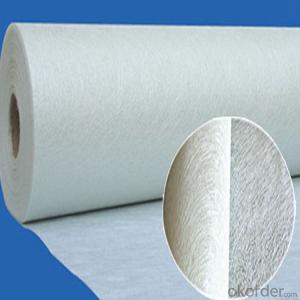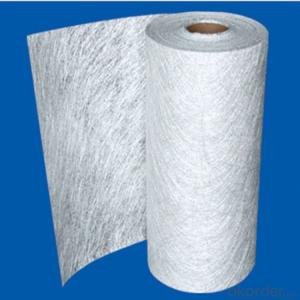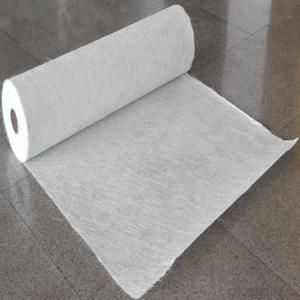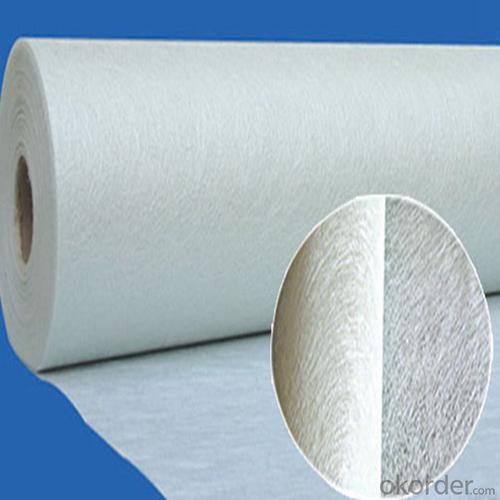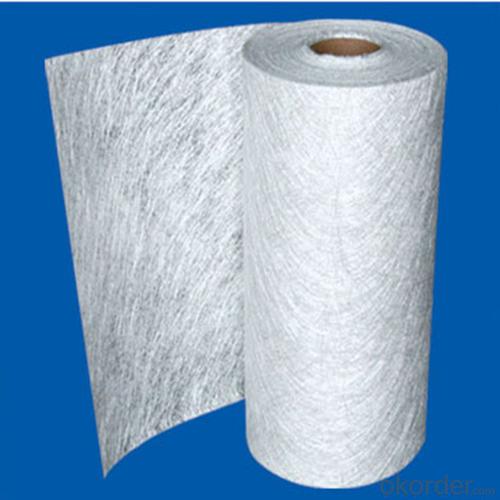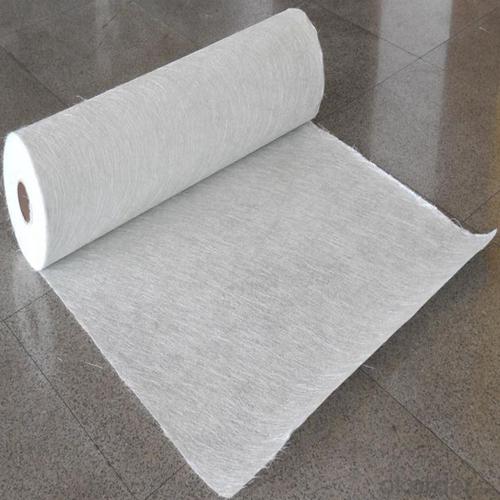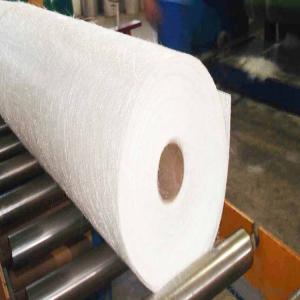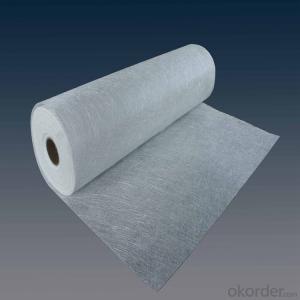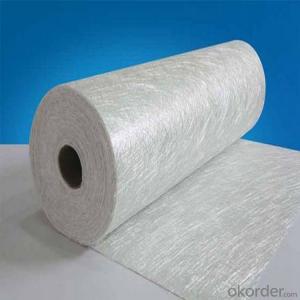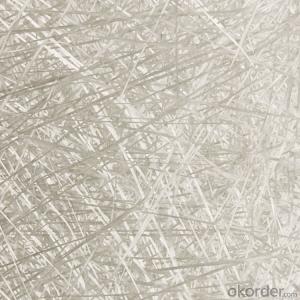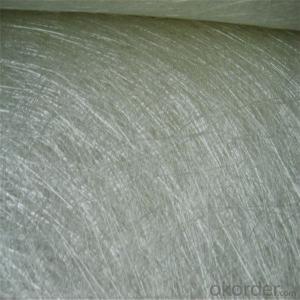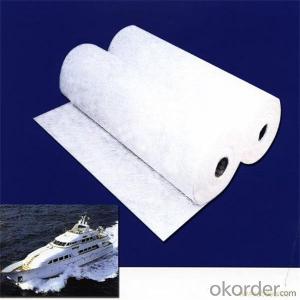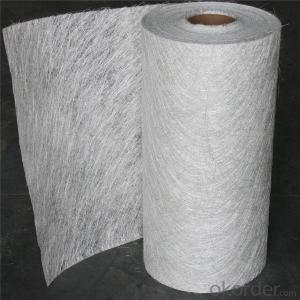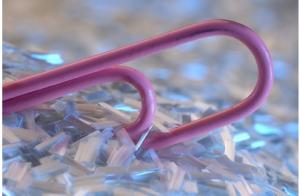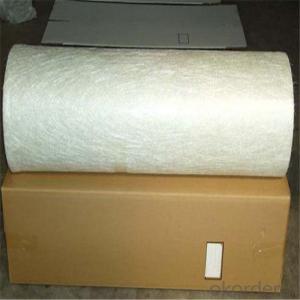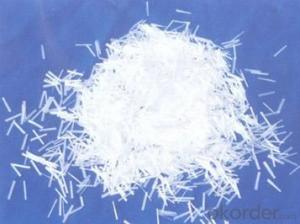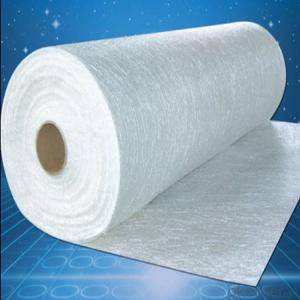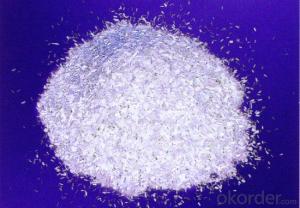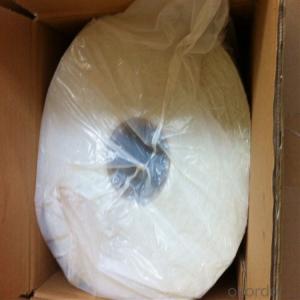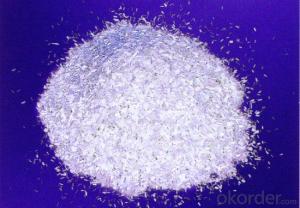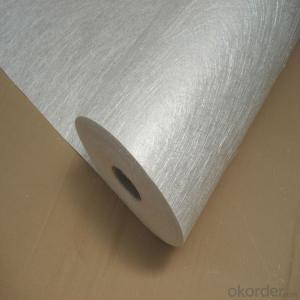Fiberglass Chopped Strands Chopped Strand Mat E-Glass & C-Glass Fiberglass
- Loading Port:
- China main port
- Payment Terms:
- TT OR LC
- Min Order Qty:
- 1 kg
- Supply Capability:
- 5000 kg/month
OKorder Service Pledge
OKorder Financial Service
You Might Also Like
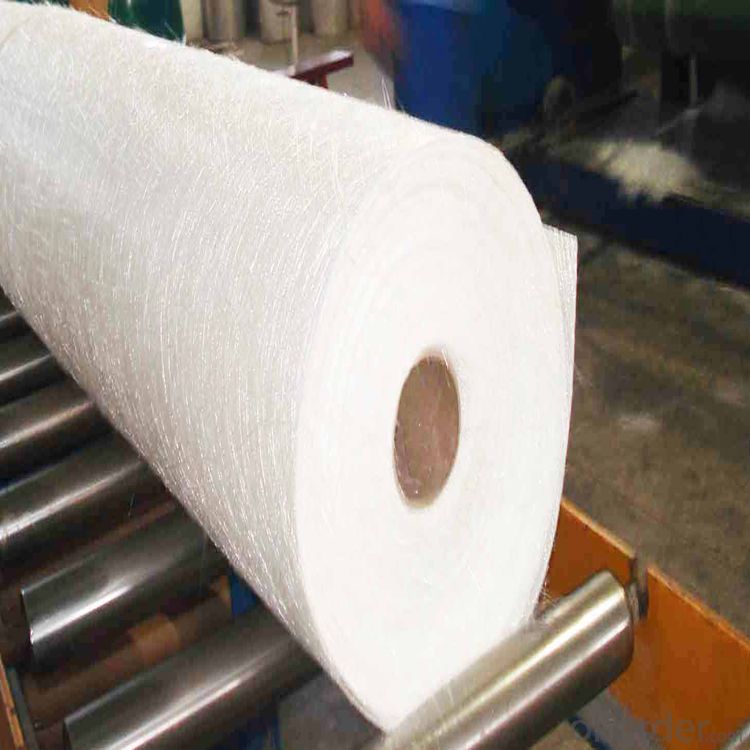
Product Description:
Chopped strand mat is made from chopped glass fibers, which are bonded with powder or emulsion binders. It can be used in hand lay-up process and continuous laminating process to produce FRP products, such as plates, lighting board, hull, bathtub, cooling towers, anti-corrosion materials, vehicles.
Good transparency for the laminates
Rapid wet out
Easy to remove air bubbles
Good dispersion and uniformity
High wet-strength retention
Good mechanical properties
Specifications:
Item | Over Density | Moisture Content | Chop Density | Polyester Yarn | Width |
(g/m2) | (%) | (g/m2) | (g/m2) | (mm) | |
EMK300 | 309.5 | ≤0.15 | 300 | 9.5 | 50-3300 |
EMK380 | 399 | 380 | 19 | ||
EMK450 | 459.5 | 450 | 9.5 | ||
EMK450 | 469 | 450 | 19 | ||
EMC0020 | 620.9 | 601.9 | 19 | ||
EMC0030 | 909.5 | 900 | 9.5 |
Special products are available according to customer’s requirement.
Product Packaging:
Each Surface Tissue is wound onto a paper tube which has an inside diameter of 76mm and the mat roll has a diameter of 330mm. The mat roll is wrapped up with plastic film,and then packed in a cardboard box or wrapped up with kraft paper. The rolls can be vertically or horizontally placed. For transportation, the rolls can be loaded into a cantainer directly or on pallets.
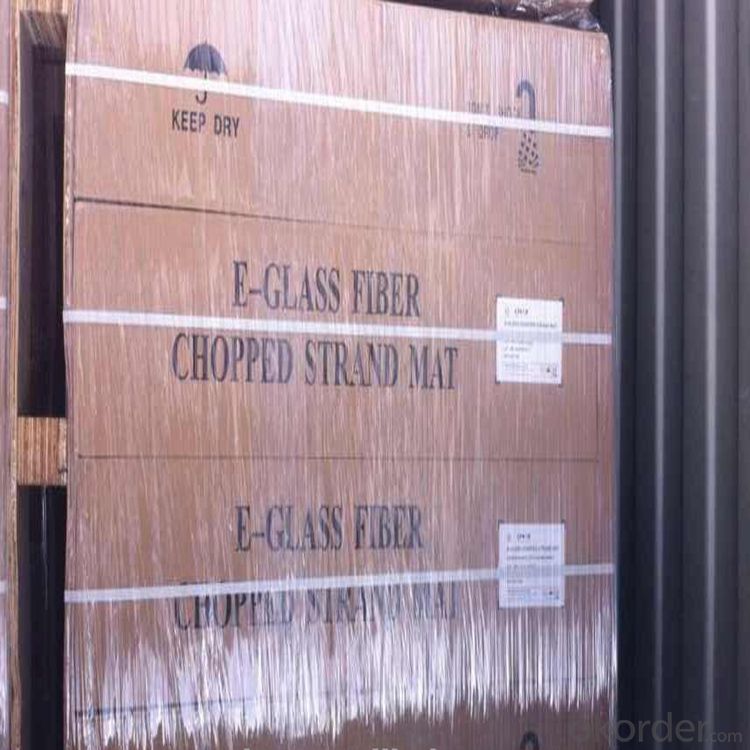
Product Storage:
Unless otherwise specified, Chopped Strand Mat should be stored in a dry, cool and rain-proof area. It is recommended that the room temperature and humidity should be always maintained at 15℃~35℃ and 50%~75% respectively.
Company Information
CNBM (China National Building Material) Group is the largest comprehensive building materials group in China that in integrate scientific research, manufacturing and logistics into one entity. The largest building materials and equipment specialists in China. Upon State Council approval, today CNBM owned more than 300 subordinate manufacturing factories and servicing companies. There are 6 fully owned public listed companies and 11 partially owned with substantial shares public listed companies. In many of these fields, CNBM is playing the leading role in the building industry in the country.
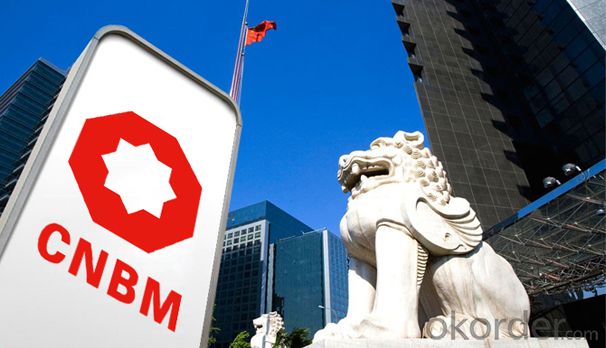
FAQ:
which kind of glass fiber sample and materials can you provide?
We can provide the glass fiber and glass fiber down stream products samples of E glass, C glass, ECR glass, High alkali glass. The products includes single end roving, assembled roving for different applications( Piping, SMC, panel, winding mill plate) , chop strand for BMC, engineering plastic (PA, PPA, PPT, POM, etc), chop strand mat (from 100gsm-900gsm) for automobile and water tank, etc, woven roving (270gsm-800gsm), surface tissue (25-50gsm), multi-axial fabric of different unit weight.
- Q: How is fiberglass chopped strand used in the wind energy industry?
- Due to its outstanding strength, durability, and lightweight characteristics, fiberglass chopped strand finds extensive use in the wind energy sector. Its primary application lies in the manufacturing of wind turbine blades, which play a crucial role in converting wind energy into electrical power. To incorporate the chopped strand form of fiberglass into the manufacturing process, a technique called resin infusion is commonly employed. In this process, the chopped strands are mixed with a resin matrix, typically epoxy or polyester, to create a composite material. This composite material is then molded into the desired shape, which, in the wind energy industry, refers to the wind turbine blade. By acting as reinforcement within the composite material, the chopped strands provide structural integrity and enhance the overall strength of the wind turbine blade. Fiberglass chopped strand possesses high tensile strength, enabling it to withstand the immense forces and stresses experienced by wind turbine blades during operation, including wind loads, turbulent conditions, and rotational forces. Moreover, the lightweight nature of fiberglass chopped strand offers advantages in the wind energy sector. Lighter wind turbine blades require less energy to rotate, thus improving the overall efficiency of the wind turbine. Additionally, the use of lightweight materials reduces the weight of the wind turbine, making transportation, installation, and maintenance more manageable and cost-effective. Furthermore, fiberglass chopped strand exhibits excellent corrosion resistance, an essential attribute in the wind energy industry where wind turbines are frequently exposed to harsh environmental conditions, such as saltwater spray, humidity, and temperature fluctuations. This corrosion resistance ensures the longevity and reliability of wind turbine blades, reducing the need for frequent maintenance and replacement. In conclusion, fiberglass chopped strand is an indispensable material in the wind energy sector, offering strength, durability, lightweight characteristics, and corrosion resistance to wind turbine blades. By utilizing this versatile material, the wind energy industry can optimize the performance, efficiency, and lifespan of wind turbines, thereby contributing to the production of clean and sustainable energy.
- Q: Can fiberglass chopped strand be used in the production of aerospace structures?
- Yes, fiberglass chopped strand can be used in the production of aerospace structures. Fiberglass chopped strand is a versatile material that offers several benefits for aerospace applications. It has high strength-to-weight ratio, excellent thermal and electrical insulation properties, and good resistance to corrosion and chemicals. In aerospace structures, fiberglass chopped strand can be used in the manufacturing of composite materials, such as fiberglass-reinforced polymers (FRPs) or fiber-reinforced composites. These composites provide enhanced strength and durability while being lightweight, making them ideal for aerospace applications where weight reduction is crucial. Fiberglass chopped strand can be used to reinforce various components in aerospace structures, including fuselage sections, wings, landing gear, interior panels, and engine parts. It can be incorporated into the manufacturing process through techniques such as filament winding, resin transfer molding, or hand lay-up. Furthermore, fiberglass chopped strand can also be customized to meet specific industry requirements, such as flame retardancy, low smoke emission, or high temperature resistance. This makes it suitable for meeting the stringent safety standards and performance criteria set by the aerospace industry. In conclusion, fiberglass chopped strand can be effectively utilized in the production of aerospace structures due to its strength, lightweight properties, and resistance to environmental factors. Its use in composite materials can contribute to the overall performance and efficiency of aerospace components.
- Q: Can fiberglass chopped strand be used in corrosion-resistant applications?
- Fiberglass chopped strand is indeed suitable for applications that require resistance to corrosion. This material, known for its exceptional corrosion resistance properties, is highly advantageous for situations where protection against corrosion is necessary. The chopped strand variant of fiberglass can effectively reinforce a variety of products and structures, including pipes, tanks, and panels, thereby enhancing their resistance to corrosion. By incorporating fiberglass chopped strand into these applications, the material serves to prevent the occurrence of rust and degradation caused by corrosive environments, ensuring the long-lasting and durable nature of the products. Moreover, fiberglass chopped strand offers additional benefits such as high strength, lightweight nature, and ease of processing, making it an adaptable choice for corrosion-resistant applications.
- Q: Can fiberglass chopped strand be used in consumer product applications?
- Yes, fiberglass chopped strand can be used in consumer product applications.
- Q: How does the fiber content affect the mechanical properties of fiberglass chopped strand composites?
- The mechanical properties of fiberglass chopped strand composites are significantly influenced by the amount of fiber present. Firstly, the overall strength and stiffness of the composite material are determined by the fiber content. Increasing the fiber content enhances the strength and stiffness as the fibers reinforce the material. These fibers act as load-bearing elements, distributing stress and preventing cracks, leading to improved tensile, flexural, and compressive strength. Secondly, the impact resistance of the composites is affected by the fiber content. A higher fiber content increases the material's ability to absorb energy, making it more resistant to impacts. The fibers act as barriers, absorbing and dispersing impact energy, minimizing damage and crack formation. Moreover, the fiber content also has an impact on the thermal properties of the composites. Fiberglass fibers have low thermal conductivity, meaning they are not good conductors of heat. By increasing the fiber content, the composites become more resistant to heat flow, making them suitable for applications requiring thermal insulation. Additionally, the dimensional stability of the composites is influenced by the fiber content. Higher fiber content reduces the coefficient of thermal expansion, making the material less prone to expansion and contraction caused by temperature changes. This characteristic is particularly important in industries like aerospace and automotive, where dimensional stability is crucial. To summarize, the fiber content in fiberglass chopped strand composites plays a crucial role in determining their mechanical properties. Higher fiber content improves strength, stiffness, impact resistance, thermal insulation, and dimensional stability. It is essential to understand and optimize the fiber content in order to design and manufacture composites that meet specific performance requirements.
- Q: Can fiberglass chopped strand be used in the production of automotive parts?
- Yes, fiberglass chopped strand can be used in the production of automotive parts. It is commonly used as reinforcement material in composite materials for various automotive components such as body panels, interior trims, and structural parts.
- Q: How is fiberglass chopped strand used in the furniture industry?
- Fiberglass chopped strand is commonly used in the furniture industry as a reinforcement material. It is mixed with resins and adhesives to create strong and durable components for furniture, such as chair frames, table tops, and panels. The fiberglass adds strength and stability to the furniture, making it resistant to impact, warping, and structural failures. Additionally, fiberglass chopped strand can also be used to create decorative elements in furniture design, adding texture and visual appeal to the final product.
- Q: Is fiberglass chopped strand suitable for automotive interior components?
- Yes, fiberglass chopped strand is suitable for automotive interior components. It is a versatile material that offers excellent strength, rigidity, and durability, making it ideal for various interior applications such as door panels, dashboard components, and seat structures. Additionally, fiberglass chopped strand can be easily molded into complex shapes and is resistant to chemicals, heat, and moisture, ensuring long-lasting performance in automotive environments.
- Q: Can fiberglass chopped strand be used in water slides?
- Yes, fiberglass chopped strand can be used in water slides. It is a commonly used material in the construction of water slides due to its strength, durability, and resistance to water and chemicals.
- Q: Can fiberglass chopped strand be used in the production of boat hulls?
- Yes, fiberglass chopped strand can be used in the production of boat hulls. It is a commonly used material in the marine industry due to its high strength, durability, and resistance to water and corrosion. The chopped strands are usually mixed with resin and applied to the hull to create a strong and lightweight structure.
Send your message to us
Fiberglass Chopped Strands Chopped Strand Mat E-Glass & C-Glass Fiberglass
- Loading Port:
- China main port
- Payment Terms:
- TT OR LC
- Min Order Qty:
- 1 kg
- Supply Capability:
- 5000 kg/month
OKorder Service Pledge
OKorder Financial Service
Similar products
Hot products
Hot Searches
Related keywords
